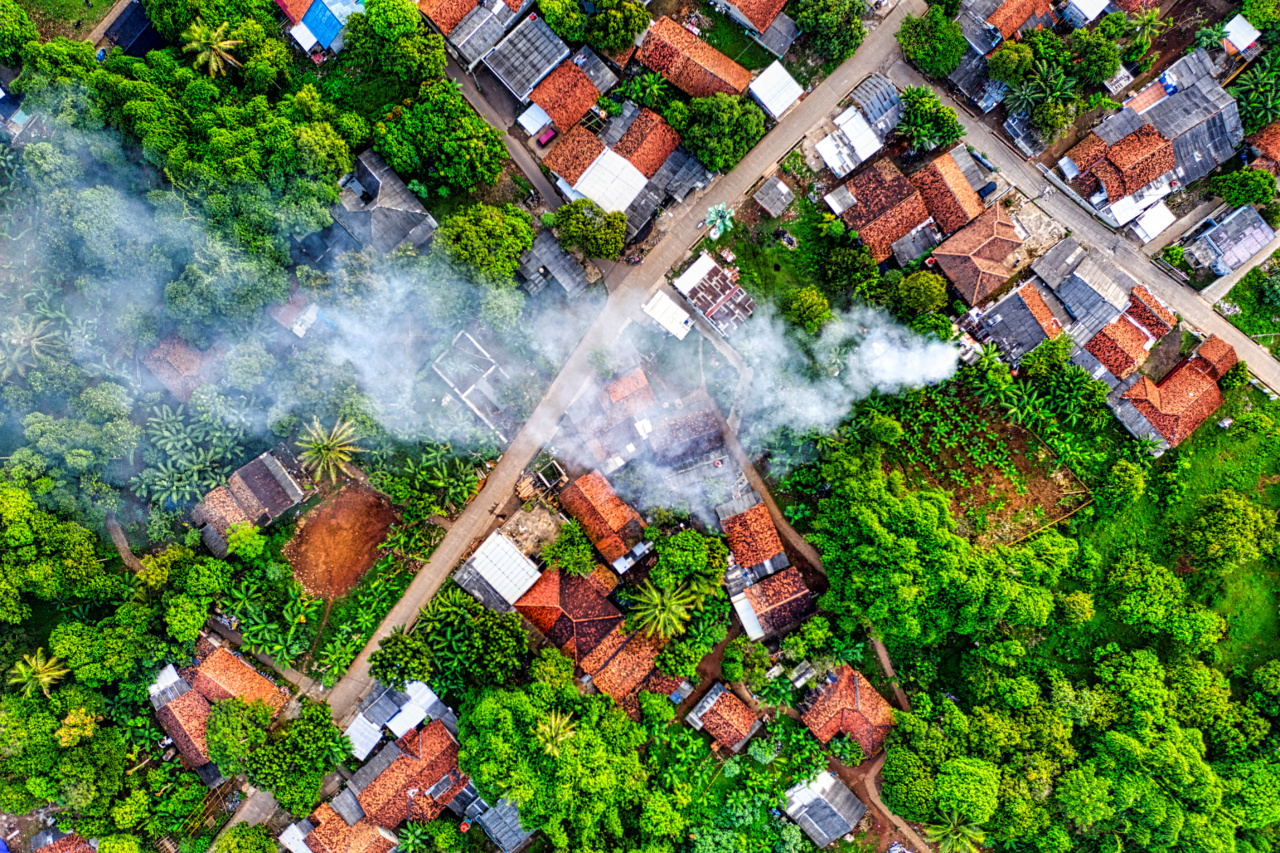Wildfires are a devastating natural phenomenon that can cause massive destruction and loss of life. Apart from the immediate dangers of flames and intense heat, wildfires also release large amounts of smoke into the atmosphere.
This smoke contains various pollutants such as carbon monoxide, nitrogen oxide, and particulate matter, which can pose significant health risks to the populations residing in and around the affected areas. While smoke pollution affects everyone to some extent, certain groups are particularly vulnerable. In this article, we will explore who is most affected by smoke pollution from wildfires.
1. Children
Children are among the most vulnerable groups when it comes to the health impacts of smoke pollution. Their respiratory systems are still developing, and they tend to breathe in more air per pound of body weight than adults.
This increased inhalation of polluted air makes them more susceptible to respiratory illnesses such as asthma, bronchitis, and pneumonia. Additionally, exposure to smoke pollution can also affect their cognitive development and overall lung function, leading to potential long-term health issues.
2. Elderly Individuals
Elderly individuals, especially those with pre-existing respiratory or cardiovascular conditions, are at a higher risk of experiencing severe health effects from smoke pollution.
The aging process naturally weakens the immune system and respiratory defenses, making it more difficult for the body to withstand the harmful effects of air pollutants. Moreover, elderly individuals often have reduced mobility, which may limit their ability to evacuate quickly during a wildfire.
This places them at a greater risk of prolonged exposure to smoke and exacerbates their vulnerability to its adverse health effects.
3. Individuals with Respiratory Conditions
People with existing respiratory conditions, such as asthma, chronic obstructive pulmonary disease (COPD), and bronchitis, are particularly sensitive to smoke pollution from wildfires.
The inhalation of smoke can trigger or worsen respiratory symptoms, leading to increased coughing, wheezing, shortness of breath, and chest tightness. Additionally, prolonged exposure to smoke can cause inflammation in the airways, resulting in severe asthma attacks and other respiratory complications.
4. Pregnant Women
Pregnant women are another group that should be cautious during periods of smoke pollution. Inhaling smoke can have adverse effects on both the mother and the developing fetus.
Research suggests that exposure to smoke during pregnancy can lead to a higher risk of premature birth, low birth weight, and developmental issues in children. Additionally, pregnant women with asthma or other respiratory conditions may experience worsened symptoms, potentially affecting their overall well-being and that of the unborn child.
5. Outdoor Workers
Outdoor workers, such as firefighters, emergency personnel, and construction workers, are often directly exposed to smoke pollution from wildfires. These individuals face multiple hazards simultaneously, including flames, heat, and smoke.
The prolonged exposure to smoke can have severe health implications, ranging from respiratory problems to eye irritation, headaches, and cardiovascular issues. It is crucial for employers to prioritize the safety of outdoor workers during times of increased smoke pollution by providing appropriate respiratory protective equipment and implementing preventive measures.
6. Individuals with Cardiovascular Conditions
People with pre-existing cardiovascular conditions, including heart disease, high blood pressure, and coronary artery disease, are more likely to experience aggravated symptoms due to smoke pollution.
The fine particulate matter present in smoke can penetrate deep into the lungs and enter the bloodstream, triggering inflammation and potentially leading to heart attacks, strokes, and other cardiovascular events. Individuals with these conditions should take extra precautions and follow medical advice during periods of increased smoke pollution.
7. Individuals with Allergies and Sensitivities
Individuals with allergies and sensitivities, such as hay fever or chemical sensitivities, may experience heightened symptoms when exposed to smoke pollution from wildfires.
The pollutants emitted by wildfires can irritate the respiratory system, leading to sneezing, coughing, runny nose, and itchy eyes. In some cases, this can lead to more severe allergic reactions or trigger asthma attacks. People with known sensitivities should stay informed about air quality conditions and take necessary precautions to minimize their exposure to smoke.
8. People Living in Proximity to Wildfires
Communities located near wildfire-prone areas are directly impacted by smoke pollution when a wildfire occurs. The closer one resides to the source of the smoke, the higher the concentration of pollutants in the air.
These individuals often experience prolonged exposure, sometimes lasting for weeks or even months during large-scale wildfires. The smoke can seep into homes, schools, and workplaces, making it challenging to find reprieve from the pollution.
It is crucial for people living in these areas to closely follow guidelines provided by local authorities and take necessary steps to protect themselves and their families.
9. Individuals with Weakened Immune Systems
Individuals with weakened immune systems, such as those undergoing cancer treatments, organ transplant recipients, and people living with HIV/AIDS, are more susceptible to the health impacts of smoke pollution.
Their bodies may have a reduced ability to fight off the harmful effects of pollutants, making them more prone to respiratory infections, complications, and longer recovery times. People with compromised immune systems should consult with their healthcare providers and take appropriate measures to protect their respiratory health during periods of intense smoke pollution.
10. Pets and Wildlife
The detrimental effects of smoke pollution are not limited to humans alone. Pets, livestock, and wildlife are also significantly impacted by wildfires and the resulting smoke pollution.
Animals can experience respiratory distress, eye irritation, and other adverse health effects when exposed to smoke. Livestock may suffer from reduced weight gain, decreased milk production, or even infertility due to the stress caused by the smoke.
Wild animals may struggle to find clean air and food sources, leading to long-term consequences for their populations and ecosystems.
In conclusion, smoke pollution from wildfires has far-reaching effects on various populations.
Children, elderly individuals, individuals with respiratory conditions, pregnant women, outdoor workers, those with cardiovascular conditions, individuals with allergies and sensitivities, people living in proximity to wildfires, individuals with weakened immune systems, and even pets and wildlife are all particularly vulnerable to the health impacts of smoke pollution. It is crucial for governments, communities, and individuals to be prepared, stay informed, and take appropriate actions to minimize the risks associated with smoke pollution from wildfires.






























